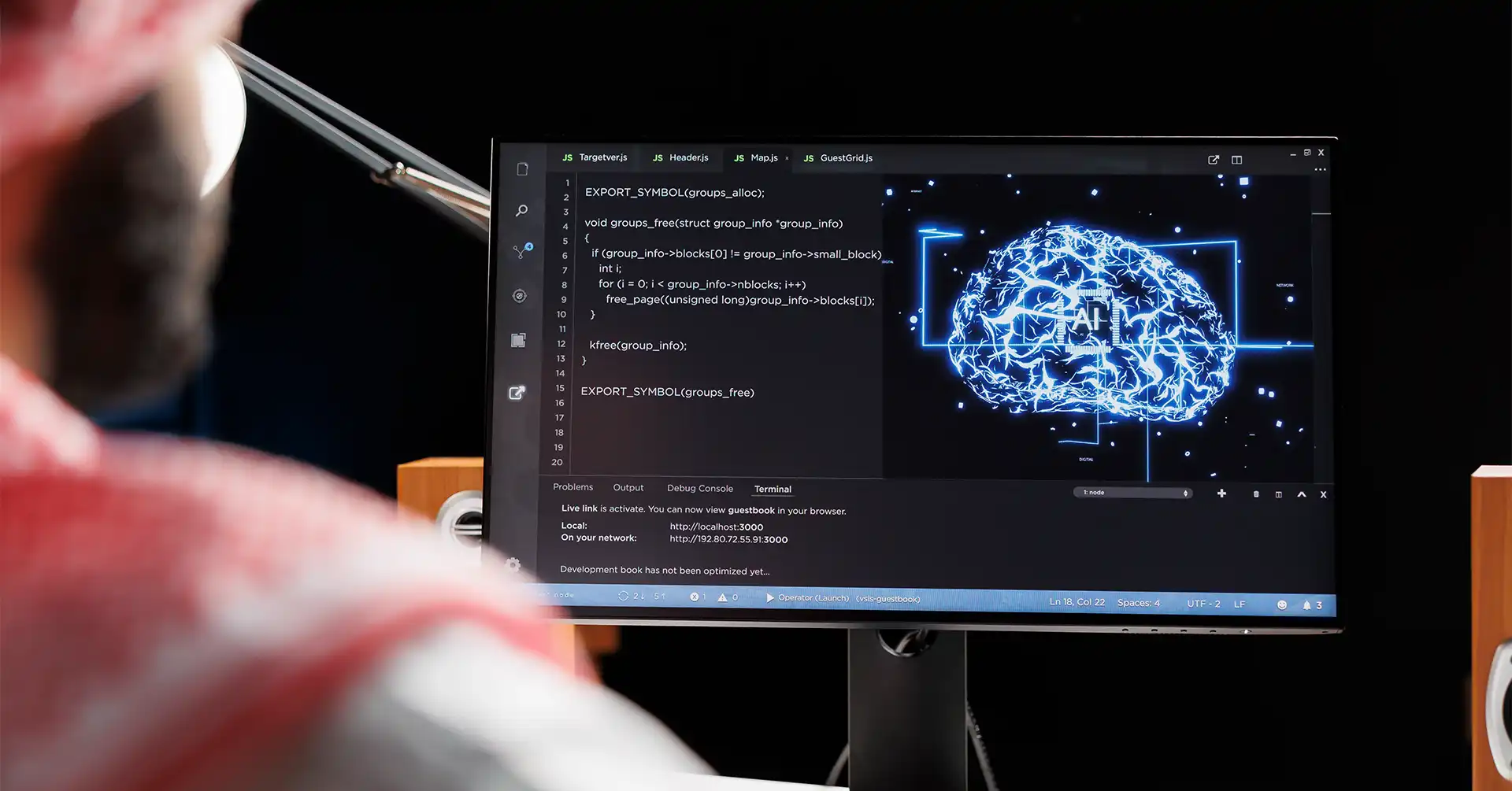Hello, my wonderful readers! Discover the groundbreaking realm of AI-based in-stream Learning, a technological marvel revolutionizing how we absorb knowledge. In this blog, we delve into the intricacies of this innovative approach, exploring its profound implications and transformative potential across various fields.
AI-Based In-Stream Learning represents a paradigm shift in education and training methodologies, leveraging the power of artificial intelligence to deliver personalized, real-time learning experiences. Unlike traditional passive learning models, this dynamic approach enables learners to engage with content as it unfolds actively, fostering deeper comprehension and retention.
At its core, AI-based in-stream Learning harnesses advanced algorithms to analyze user interactions and preferences, seamlessly adapting content delivery to suit individual learning styles and pace. Whether through interactive simulations, immersive multimedia experiences, or targeted micro-lessons, this adaptive technology ensures that learning remains engaging, relevant, and effective.
Moreover, the versatility of AI-based in-stream Learning extends far beyond the realm of education, finding applications in corporate training, professional development, and even leisure activities such as gaming and entertainment. By harnessing AI’s vast potential, organizations can streamline learning processes, optimize performance, and stay ahead in today’s fast-paced digital landscape.
Join us as we explore the transformative capabilities of AI-based in-stream Learning. Together, we’ll explore its underlying principles, examine real-world use cases, and envision a future where learning knows no bounds. Embrace the technological leap forward and unlock new growth, innovation, and mastery avenues.
What is AI-Based In-Stream Learning?
In the ever-evolving landscape of education and technology, a groundbreaking innovation known as AI-Based In-Stream Learning has emerged as a game-changer. This dynamic approach to learning leverages the power of artificial intelligence (AI) to deliver personalized, real-time educational experiences. In this comprehensive exploration, we unravel the essence of AI-based in-stream Learning, diving deep into its definition, underlying mechanisms, and transformative potential.
Defining AI-Based In-Stream Learning: A New Era of Education
At its core, AI-Based In-Stream Learning represents a departure from traditional passive learning models. Unlike conventional methods where learners passively consume pre-packaged content, AI-Based In-Stream Learning facilitates active engagement by integrating AI algorithms into the learning process. Through this approach, learners interact with content in real-time, allowing for personalized and adaptive educational experiences.
Key Components and Mechanisms: The Inner Workings of AI-Based In-Stream Learning
Adaptive Content Delivery: Tailoring Learning Experiences in Real-Time
Central to AI-Based In-Stream Learning is the concept of adaptive content delivery. Through sophisticated AI algorithms, learning platforms analyze user interactions, preferences, and performance metrics to dynamically adjust the delivery of content. This personalized approach ensures that learners receive material tailored to their individual needs, learning styles, and proficiency levels.
For example, if a learner demonstrates mastery of a particular concept, the system may skip ahead to more advanced topics to maintain engagement and challenge. Conversely, if a learner struggles with a concept, the system can provide additional explanations, examples, or practice exercises to reinforce understanding.
Real-Time Feedback and Assessment: Driving Continuous Improvement
Another critical aspect of AI-Based In-Stream Learning is the provision of real-time feedback and assessment. By continuously monitoring learner progress and performance, AI algorithms can identify areas of strength and weakness, offering immediate feedback to guide learning efforts.
For instance, interactive quizzes, simulations, and exercises embedded within the learning stream provide learners with opportunities to apply newly acquired knowledge and skills. Based on their responses, the system can gauge proficiency levels, pinpoint misconceptions, and offer targeted interventions to address learning gaps.
Contextualization and Personalization: Enhancing Relevance and Engagement
AI-Based In-Stream Learning excels in contextualizing educational content to enhance relevance and engagement. By analyzing contextual factors such as learner preferences, interests, and real-world applications, AI algorithms can tailor content delivery to resonate with individual learners.
For example, in a language learning scenario, the system may incorporate culturally relevant content, personalized vocabulary lists, and real-life conversational examples to enhance immersion and retention. Similarly, in professional development settings, AI algorithms can curate learning pathways aligned with learners’ career goals, industry trends, and skill requirements.
Applications and Use Cases: Harnessing the Power of AI-Based In-Stream Learning
Education and Training: Transforming Learning Experiences
In the realm of education, AI-Based In-Stream Learning holds immense promise for transforming traditional learning experiences. By fostering active engagement, personalization, and adaptability, this innovative approach empowers educators to deliver more effective and impactful instruction.
For instance, in a classroom setting, AI-based in-stream Learning platforms can supplement traditional lectures with interactive multimedia content, simulations, and collaborative activities. These dynamic learning experiences not only capture students’ attention but also cater to diverse learning styles, preferences, and abilities.
Moreover, in online learning environments, AI-based in-stream Learning enables educators to create customized learning pathways, adaptive assessments, and real-time interventions to support learners’ individual learning journeys. Whether it’s mastering complex concepts in STEM subjects or developing language proficiency, AI-powered platforms provide learners with the tools and resources needed to succeed.
Corporate Training and Professional Development: Driving Workplace Learning
Beyond the realm of education, AI-Based In-Stream Learning is reshaping corporate training and professional development initiatives. In today’s fast-paced business environment, organizations must equip their workforce with the knowledge and skills needed to stay competitive and agile.
AI-Based In-Stream Learning platforms offer a flexible and scalable solution for delivering targeted training programs tailored to employees’ roles, responsibilities, and career aspirations. By analyzing performance data and learning metrics, these platforms identify skill gaps, recommend personalized learning paths, and track progress in real-time.
For example, in a sales training scenario, AI algorithms can simulate customer interactions, provide feedback on sales pitches, and offer personalized coaching to improve performance. Similarly, in technical fields such as software development or engineering, AI-based in-stream Learning platforms can deliver hands-on coding exercises, virtual labs, and troubleshooting simulations to enhance skills mastery.
Challenges and Considerations: Navigating the Road Ahead
While AI-based in-stream Learning holds immense potential, it also presents challenges and considerations that must be addressed to realize its full benefits.
Privacy and Data Security: Safeguarding Learner Information
One of the primary concerns surrounding AI-based instream Learning is the collection and use of learner data. As AI algorithms analyze user interactions and preferences to personalize learning experiences, safeguarding learner privacy and data security becomes paramount.
Educational institutions and learning platforms must implement robust data protection measures, including encryption, access controls, and anonymization techniques, to ensure the confidentiality and integrity of learner information. Additionally, transparent data collection, storage, and usage policies must be communicated to learners to foster trust and compliance.
Ethical and Bias Considerations: Mitigating Algorithmic Bias
Another challenge associated with AI-Based InStream Learning is the potential for algorithmic bias and discrimination. As AI algorithms make decisions based on training data and predefined criteria, they may perpetuate or amplify existing biases in the data.
To mitigate bias in AI-based instream Learning systems, developers must employ rigorous testing, validation, and auditing procedures to identify and address bias at each development lifecycle stage. Furthermore, ongoing monitoring and evaluation of algorithmic decision-making processes are essential to ensure fairness, transparency, and accountability.
Embracing the Future of Learning
AI-based in-stream Learning represents a paradigm shift in education and training. It offers personalized, adaptive, and engaging learning experiences tailored to individual learners’ needs. By harnessing the power of artificial intelligence, this transformative approach has the potential to revolutionize how we acquire knowledge, develop skills, and navigate the complexities of the digital age.
As we navigate the road ahead, addressing challenges related to privacy, data security, ethical considerations, and bias mitigation is essential to realize the full benefits of AI-Based In-Stream Learning. By fostering collaboration, innovation, and responsible use of technology, we can create a future where learning knows no bounds, empowering individuals and organizations to thrive in an ever-changing world.
Conclusion
AI-Based In-Stream Learning represents a transformative leap forward in education and training, ushering in a new era of personalized, adaptive, and engaging learning experiences. As we have explored throughout this blog, integrating artificial intelligence into the learning process empowers individuals and organizations to harness the full potential of technology to enhance knowledge acquisition, skill development, and performance optimization.
By leveraging advanced algorithms to analyze user interactions, preferences, and performance metrics, AI-Based InStream Learning platforms deliver tailored content in real-time, ensuring learners receive the support and guidance they need to succeed. Whether in educational settings, corporate training programs, or professional development initiatives, this dynamic approach fosters active engagement, promotes mastery, and drives continuous improvement.
As we embrace the possibilities of AI-Based In-Stream Learning, it is essential to address privacy, data security, ethical considerations, and bias mitigation challenges. By prioritizing transparency, accountability, and responsible use of technology, we can create inclusive, equitable, and accessible learning environments that empower learners of all backgrounds and abilities.
The future of AI-Based InStream Learning holds immense promise for shaping how we learn, work, and interact with information. By embracing innovation, collaboration, and lifelong learning, we can unlock new opportunities for growth, innovation, and mastery in an ever-changing world. Together, let us embark on this journey of discovery and transformation, driven by the boundless potential of AI-based InStream Learning to revolutionize education and training for generations to come.
Also Read:
Chatbots in Education to Empower Educators in 2024
AI Avatars and What Are They: How They Help Us in Daily Life






